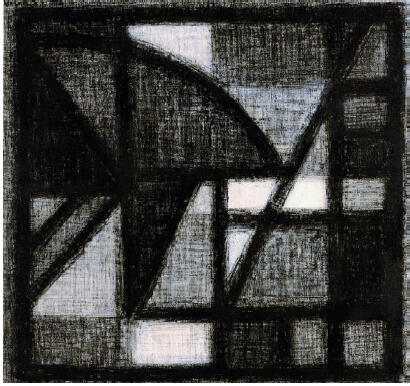IN MEMORIAM
The legacy of Oswaldo Vigas (1926-2014)
“I have never been strictly abstract or strictly figurative. What I have always been is strictly Oswaldo Vigas”. This quote by one of the key figures of Latin American modernity, who was born in Valencia, Venezuela in 1926, and who died this past 22 of April at 88 years old in his country of origin, defines what was his existence and, within it, the entirety of a great and powerful creative journey that resists classification.

According to art critic and curator Adriana Herrera, “Vigas refused to rigorously follow any of the period’s tendencies, although in his work there are marks of geometric art, abstract expressionism, and even informalism, but more than anything, of a constructivist search for a universal language that fused the avant-gardes of the Old World with the iconographic Pre-Columbian legacy, and with the mythological power of traditional Latin American culture. He was not a Pre-Hispanic art collector for nothing. But Vigas always painted what he needed to paint. He followed his own path without bending to the demand of others, he followed his own progressions that always were and returned to myth, to Eros and to life, and he created pieces that have an archetypal character and that manage to merge the mythical with modernity.”
At 86 years old he assisted the inauguration in Miami of one of his biggest individual exhibitions in the past years: “Constructivist Vigas. Paris 1953-1957”, at Ascaso Gallery, under the curatorship of Bélgica Rodríguez.
70 years before, at 16 years old, he had received the Illustration Prize for the First Gallery of Illustrated Poems, at the Ateneo in Valencia, Carabobo, Venezuela, where he had a personal exposition shortly after. Invited by the painter Alirio Oramas, he joined the Taller Libre de Arte in Caracas. It was there where he started to paint his legendary Witch series. It is impossible to talk about Vigas without talking about them: Little Witch, nocturnal Witch, Witch of the branch, Witch of the snake, Witch of the yellow carpet, Princess Witch, child Witch, and the great Witch. This oeuvre won him in 1952 the National Fine Arts Prize, while he simultaneously obtained the John Boulton Prize, and the Arturo Michelena Prize. It was thanks to these prizes- the first of which included a trip to Europe- that Vigas settled for many years in Paris, where he followed, like Tamayo during Mexican muralism, his own path.
“When I arrived in Paris in 1952, it had been two years since Alejandro Otero had returned to the city and Mateo Manaure and other defenders of abstract art were in Paris–founders of the magazine ‘ Los Disidentes’–, but I didn’t join any group”, he claimed in an interview with Herrera. In the mid-50s the architect Carlos Raul Villanueva commissioned to him some murals for the University Campus in Caracas, Venezuela.
After finishing the abstract murals and the series of black objects, landscape objects, city objects, he returned time and time again to the feminine archetype. With images of hybrid females fused with animals or plants, and personifications like “ Enigmadora”, “Paseante”, and his “ Ludicas.” He passed from expressionist strokes to the figurative search for the ancestors, or to the Dionysian scenes of his erotic series, painted in the mid-90s, the same decade where he obtained the Grand Prize SAS Principe Rainier III of Monaco, 1992, and the Vermeil Medal of the city of Paris. In 2008, he was named Commander of the Arts and Letters, the highest distinction granted in France by the Ministry of Culture. In 2012 King Juan Carlos I of Spain honored him for his important contribution to Latin American art during the celebration of the bicentennial of the Supreme Court of the country.
Miguel Otero Silva, determinant figure in the gestation of artistic and literary modernity in Venezuela, wrote about Vigas in ways that define the legacy he has left after his passing: “Vigas possesses his own ministry, his own lines, his own colors. He paints with profundity, with passion, prisoner of a tormented sensibility. He searches in the trace of modern lines the most ancient artistic expression in the world.”
Because of this, in his interview with Adriana Herrera, which took place in December 2012, he evoked with a smile the day that the painter Victor Valera passed by his studio and said: “Viga, you’re in prehistory”. “You know?”- Vigas confessed to the critic- I am more and more convinced that prehistory is the most important, because through it we communicate not only with history, but with what goes through all the ages…that novelty everyone looks for is not art.”






